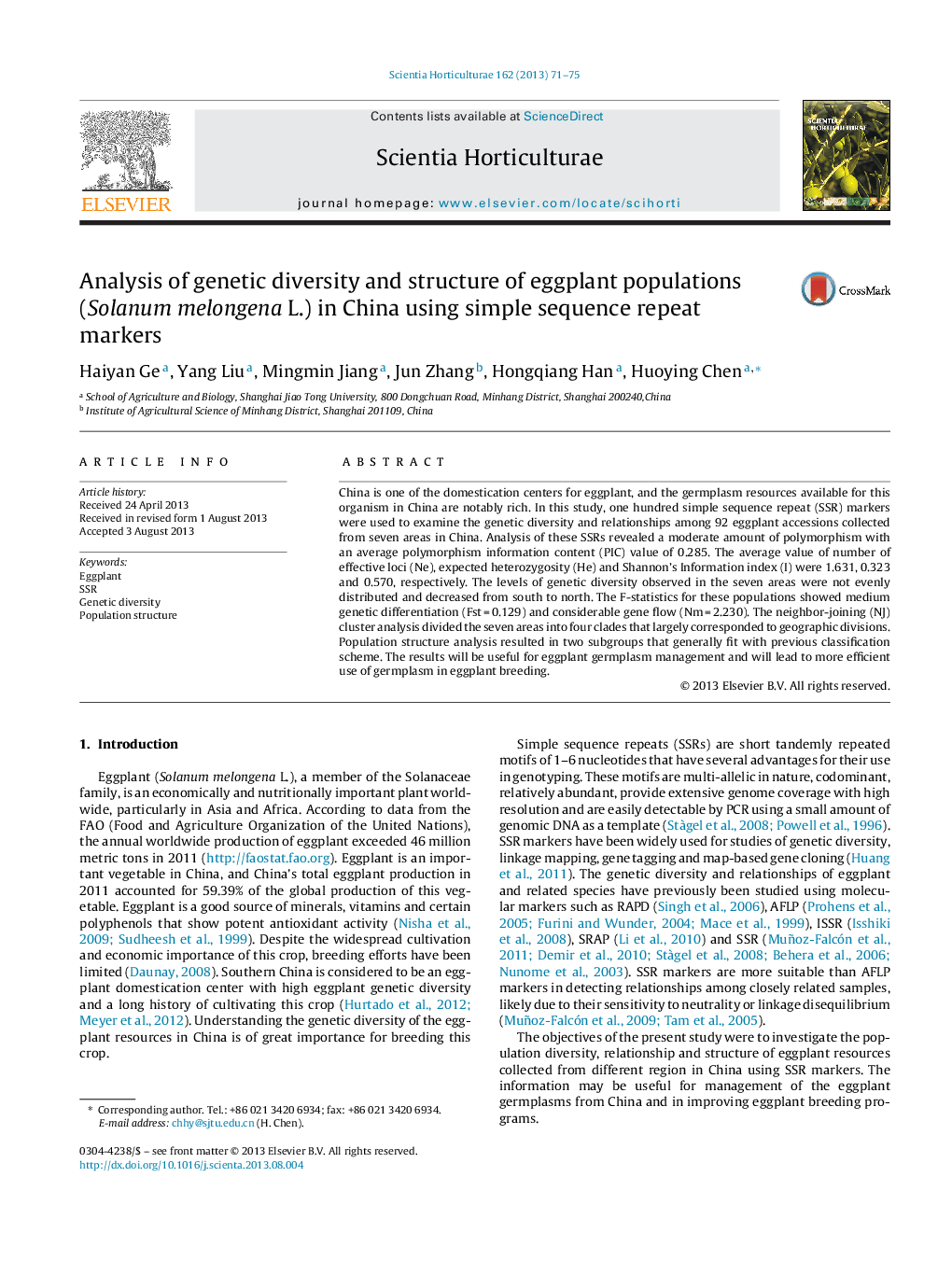| Article ID | Journal | Published Year | Pages | File Type |
|---|---|---|---|---|
| 6407267 | Scientia Horticulturae | 2013 | 5 Pages |
â¢The SSRs revealed medium polymorphism among the materials from China.â¢The levels of genetic diversity decreased from south to north.â¢Medium genetic differentiation and considerable gene flow were revealed.â¢Cluster analysis resulted in four clades corresponding to the geographic divisions.â¢The structure analysis resulted in two subgroups.
China is one of the domestication centers for eggplant, and the germplasm resources available for this organism in China are notably rich. In this study, one hundred simple sequence repeat (SSR) markers were used to examine the genetic diversity and relationships among 92 eggplant accessions collected from seven areas in China. Analysis of these SSRs revealed a moderate amount of polymorphism with an average polymorphism information content (PIC) value of 0.285. The average value of number of effective loci (Ne), expected heterozygosity (He) and Shannon's Information index (I) were 1.631, 0.323 and 0.570, respectively. The levels of genetic diversity observed in the seven areas were not evenly distributed and decreased from south to north. The F-statistics for these populations showed medium genetic differentiation (Fst = 0.129) and considerable gene flow (Nm = 2.230). The neighbor-joining (NJ) cluster analysis divided the seven areas into four clades that largely corresponded to geographic divisions. Population structure analysis resulted in two subgroups that generally fit with previous classification scheme. The results will be useful for eggplant germplasm management and will lead to more efficient use of germplasm in eggplant breeding.
